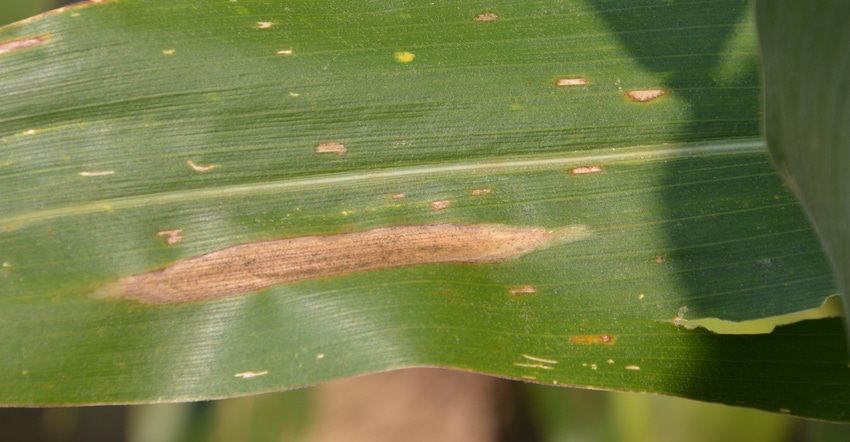September 3, 2018

We have a potential for a record corn crop, with the highest or near-highest yields ever. We started off with great stands and early vigor. I’ve never seen corn grow so fast during the first four weeks. However, the conditions that were conducive for the crop growth also favored the development of fungal leaf diseases like gray leaf spot and northern corn leaf blight. They became rampant in some areas.
Hot and humid weather helped gray leaf spot, whereas cooler and humid weather favored the spread of northern corn leaf blight. Favorable conditions helped these diseases tighten their grip on the upper leaves of plants in fields if they were already present on the lower leaves.
The corn crop is made in most areas of the Corn Belt, but the crop is not in the bins yet. There is sometimes many a slip between the cup and the lip.
As of this writing, southern rust hasn’t been a factor so far in the Midwest. I didn’t see much anthracnose leaf blight this year. However, roots and stalks of plants weakened by other leaf diseases can also be affected by this fungus since its spores can live in the soil for a long time. This pathogen has plagued cornfields for many years and has been one of the biggest cornstalk killers for the last few years.
Anthracnose leaf blight can infect stalks by the splashing of spores from soil to lower internodes of stalks. It makes shiny black spots on the stalks that look like black shoe polish. The stalks become black inside also, and they can rot and go down.
Some fungi affect ears
Diplodia and gibberella ear and stalk rot fungi, just like anthracnose, have spores, and spores of these fungi can also survive in the soil for many years. Diplodia has a whitish color on the ear. This disease usually starts at the base of ears and can spread to the whole ear. Infected kernels are light in test weight and not known to produce any toxins.
Gibberella ear rot is produced by a pink-colored fungus that generally starts at the tips of the ears. It can produce mycotoxins known as fumonisins. Grain should be tested before feeding to livestock. Both diplodia and gibberella can cause lots of yield loss if corn isn’t harvested on time.
Crop scouting starts at emergence and doesn’t end until the crop is in the bin. As the crop starts to mature, scout for ear and stalk rots by pulling back the husks, pushing or pinching the stalks and planning which fields should be harvested first to reduce field losses. Mother Nature has been kind to us during this growing season in most areas. Let’s hope Mother Nature gives us a good drying and harvest season so we can safely bring in the biggest corn crop ever!
Nanda is president of Agronomic Crops Consultants LLC. Email him at [email protected] or call him at 317-910-9876.
About the Author(s)
You May Also Like






